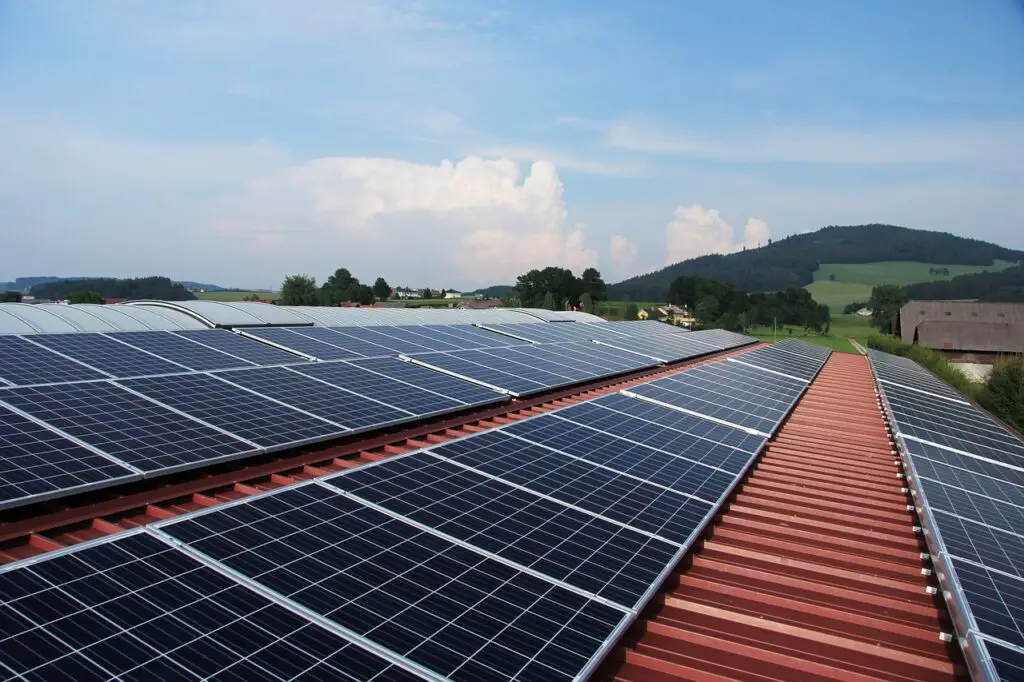Worldwide, businesses are increasingly investing in commercial solar panels, driven by the improved efficiency of these panels and the growing need to adopt renewable energy solutions for reducing carbon footprints, in line with government net-zero targets.
Despite the significant investment in solar technology, some businesses fail to adequately maintain their solar panels.
This lack of maintenance leads to reduced electricity output from the panels, ultimately costing the business in terms of efficiency and potential savings.
To avoid this, businesses need to focus on various maintenance strategies to preserve and enhance the efficiency of their solar panels throughout their operational life.
Here are our eight ways to help solar businesses improve the efficiency of their solar panels.
Can Solar Panel Efficiency Be Improved?
There are multiple ways to boost the efficiency of solar panels. Over time, solar panels have seen significant improvements in efficiency thanks to ongoing technological developments.
Innovations in materials, design, and production processes are key areas where researchers and engineers focus on elevating the performance of solar panels.
Such advancements primarily enhance the panels’ ability to convert sunlight into electricity more efficiently, reduce energy loss, and increase the total energy output.
The efficiency of solar energy production can be further improved by ensuring proper installation and maintenance of solar panels, implementing monitoring systems, and integrating energy storage systems. These steps collectively make solar panels more effective in harnessing solar energy.
How to Maximize Solar Panel Efficiency?
Choose High-Efficiency Solar Panels
Solar panels consist of photovoltaic cells that convert solar energy, received as sunlight, into electricity. However, not all the solar energy a panel receives can be converted into electricity.
So the efficiency of a solar panel is measured by the percentage of solar energy that its photovoltaic cells can convert into electrical power.
Over the past five years, there have been significant advancements in solar cell technology. Thus the average efficiency of solar cells has increased from approximately 15% to 20%. It’s important to note, though, that solar panels vary in efficiency.
This variation is due to differences in materials and construction, which also influence their cost.
Buying a higher-efficiency solar panel model might be more expensive initially, but it’s often the best choice for optimal performance.
As of 2024, some of the most efficient commercial solar panels available are produced by companies like LG and Sunpower, boasting efficiencies of around 22%. This higher efficiency can lead to better energy production and long-term savings.
Ensure Proper Orientation and Tilt
Proper alignment is key. In the Northern Hemisphere, aim panels true south, and in the Southern Hemisphere, aim their true north.
The tilt angle should be adjusted according to your geographic latitude to optimize sun exposure, thus maximizing energy generation and minimizing shading.
Regular Cleaning of Panels
Dirt and debris can significantly reduce efficiency by blocking sunlight.
Regular cleaning, particularly in dusty or polluted areas, is essential to maintain optimal performance.
Gentle cleaning methods are recommended to avoid damaging the panels.
Avoid Installing Solar Panels in Shaded Areas
Shade can significantly impact the performance of solar panels, a fact not commonly known. When sunlight is obstructed, even partially, the electricity output of solar panels decreases notably.
This is especially true in a series of connected solar panels where shading on just one photovoltaic cell can adversely affect the energy production of neighboring cells.
In such a scenario, the shaded cell behaves like a resistor, hindering the flow of electricity through the panel.
The most common causes of shading on solar panels are tall trees and nearby buildings.
Therefore, it’s crucial to thoroughly assess the installation site during the planning stage to ensure minimal or no shading.
Proper site analysis and planning can help maximize the efficiency and effectiveness of your solar panel system, ensuring optimal energy production.
Use of Mirrors (Solar Concentrators)
Using mirrors can redirect additional sunlight onto the panels, especially in areas with limited direct sunlight.
This technique, however, requires professional consultation and consideration of potential safety risks, like excessive heat or glare.
Optimize Inverter Performance
A high-quality, efficient solar inverter is crucial as it converts DC electricity from the panels into usable AC electricity.
Regular maintenance and monitoring of the inverter are essential for ensuring peak performance.
Monitoring Your Solar System
Utilizing monitoring tools or software supplied by your solar panel installer is crucial for maintaining the optimal performance of your solar system. These tools enable you to quickly spot any performance issues or irregularities.
Monitoring daily energy output, voltage levels, and system error messages is important. Regular visual inspections are also vital to verify that the panels are undamaged, correctly connected, and in overall good condition.
Use Advanced Technology
Incorporating cutting-edge technologies like microinverters, power optimizers, and solar trackers is a great strategy to maximize the efficiency of your solar panels.
Microinverters and Power Optimizers: These devices optimize the performance of each solar panel individually. They effectively mitigate issues like shading, panel mismatch, and uneven soiling, enabling every panel to operate at its peak efficiency.
Upgrading to smart inverters that feature advanced technologies like Maximum Power Point Tracking (MPPT) can further enhance your system’s overall performance.
Advanced Solar Cell Technology: Utilizing advanced solar cell types, such as monocrystalline or polycrystalline silicon, thin-film cells (like CIGS, CdTe, or perovskite), or multi-junction cells can lead to higher efficiencies compared to conventional silicon PV cells. These advanced cells can significantly increase energy output, especially in areas with fluctuating sunlight.
Solar Trackers: These devices automatically adjust the panels’ orientation and tilt to follow the sun’s path across the sky.
Although their installation can be costly, solar trackers are particularly beneficial for maximizing solar absorption throughout the year, especially in regions with less consistent sunlight.









